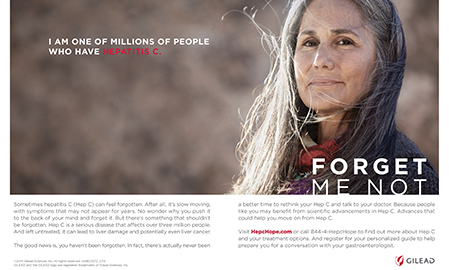STRIKEFORCE had what agency leaders call a “seminal year” in 2013, as the agency reached the five-year milestone and continued its upward trajectory. Despite a setback on Teva’s ParaGard due to client departures and agency consolidation, Strikeforce rebounded with new business from Amgen, BMS, and Gilead Sciences. In addition, the agency started engagements with Amniox, Intra-Cellular Therapies, NxStage Medical, and Warner-Chilcott.
“The wins from Amgen, BMS, and Gilead are not only significant in size and stature, but they also reinforce and further affirm the agency’s nontraditional approach to doing business,” says agency CEO and founder Mike Rutstein. “In less than three months, all three client giants tapped Strikeforce for major product launches in some of the most coveted categories including oncology and hepatitis C.”
Much of the recent surge of new business, Rutstein says, comes as a result of clients responding to the pallid offerings and compromises of “monolithic traditional shops.” In contrast, he believes that Strikeforce has utilized its “open source structure” combining a core team orchestrating and managing every aspect of a client’s business with specialists known as “sharpshooters.” Through the company’s “Precision Pairing” process, staff is chosen on a specific talent-to-task basis. This approach, Rutstein says, keeps the agency’s thinking and work relevant and fresh. Strikeforce’s work contributed to the growth of the world’s most successful launch and fastest growing drug, Gilead’s Sovaldi for hepatitis C. Beyond the numbers, the agency’s work is also getting recognized and racking up awards; Strikeforce’s disease awareness campaign “Forget Me Not” for Gilead recently took top honors in a national awards show and is in the running for several more industry awards.
From a growth perspective, Strikeforce is up 20% so far compared with 2013 and is nearing $10 million in revenue. As part of an aggressive growth plan, the agency has doubled its offices and added several senior-level staffers across disciplines. Today STRIKEFORCE has more than 25 full-time staffers stewarding client business and more than 300 “sharpshooters.”
According to Rutstein, the agency is beginning to benefit from the downside of larger-agency consolidation. “Many clients have come to believe that consolidation leads to greater efficiencies, only to later find out that it often comes with compromise, including level of staffing, thinking, and potency of work product,” he says. “We’re now starting to see the pendulum swing the other way as the pressures to deliver mount and marketing teams clamor for innovative agency solutions.”
Rutstein believes that 2014 is presenting tremendous opportunities for the industry as a whole as new agents emerge and assets with cure intent and capability come onto the horizon. “But challenges also loom regarding even greater shifts in power from providers to payers and pricing wars,” he says. “Innovation, while heralded, also comes with a price tag. But the appetite for assuming cost, even for lifesaving therapies, will continue to be a flashpoint in the years ahead. For those pharma companies without a ‘crown jewel’ in the mix, we expect to see ongoing acquisitions, mergers and re-organizations in an effort to push profitability, bolster therapeutic category expertise and to address portfolio gaps.”
From the July 01, 2014 Issue of MM+M - Medical Marketing and Media








